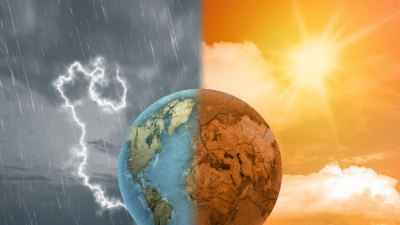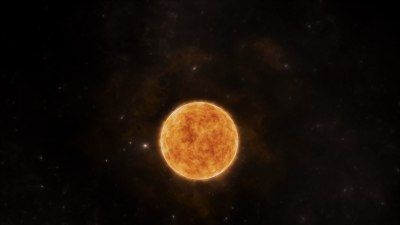What If Earth Stopped Spinning The Devastating Weather Changes
Explore the catastrophic weather impacts if Earth suddenly stopped spinning.

If Earth were to suddenly stop spinning, the consequences would be catastrophic, altering weather patterns and affecting life as we know it. The rotation of Earth plays a crucial role in determining weather systems, ocean currents, and climate zones. In this article, we delve deep into what would happen if Earth ceased its rotation, exploring the devastating weather changes that would result from such an unprecedented event.
The Mechanics of Earth's Rotation
Earth rotates on its axis approximately once every 24 hours, creating a cycle of day and night. This rotation influences the Coriolis effect, which affects wind patterns and ocean currents. Without this rotation, the atmosphere would react dramatically, leading to extreme weather changes.
Immediate Consequences of Stopping Rotation
Picture a sudden halt in rotational speed: everything on the surface—humans, animals, and structures—would continue moving at the same speed as Earth’s surface, leading to catastrophic winds estimated at 1,600 km/h (1,000 mph) at the equator. Buildings would be torn apart, and landscapes would be reshaped violently. The immediate aftermath would result in massive devastation globally.
Weather Patterns Disrupted
The cessation of Earth’s spin would disrupt the natural flow of weather systems. No longer would trade winds distribute heat around the planet effectively; instead, temperatures would become extreme. Equatorial regions would endure relentless heat, while polar regions would plunge into unyielding cold.
Temperature Extremes
Without rotation, the sun would continuously shine on one side of the planet while the other side would remain in darkness. The side facing the sun could reach unprecedented temperatures, potentially exceeding 200 degrees Fahrenheit (93 degrees Celsius), while the dark side would experience a severe drop in temperature, leading to bleak conditions, potentially plunging to negative 100 degrees Fahrenheit (-73 degrees Celsius).
Changes to Ocean Currents
Ocean currents, integral to global climate and weather patterns, would also change drastically. The ocean's momentum would continue, creating massive tidal waves and currents that would inundate coastal regions with unprecedented flooding. This surge would lead to the loss of coastal cities and ecosystems, altering marine and terrestrial life.
The Effects on Weather Systems
Weather systems would transform entirely; without the Coriolis effect, storms would develop at different intensities. For instance, hurricanes, which rely on the rotation of the Earth to form and maintain their structure, could become weaker or more erratic. Conversely, storms could also become more concentrated and violent, impacting areas that were previously sheltered from severe weather.
Precipitation Patterns Altered
The global distribution of rain would change, with once-fertile areas becoming desiccated deserts while others might become inundated with constant rainfall. The potential for flooding in certain regions would increase dramatically, creating new lakes and changing the geography of continents.
Biosphere Disruption
Life on Earth relies heavily on consistent weather patterns. Animals and plants would struggle to adapt to the extreme changes in temperature and precipitation. Ecosystems would face collapse; many species would perish due to the inability to survive in the drastically altered environment. Agriculture would suffer immensely, leading to food shortages and potential famines.
Long-Term Climate Change
Over time, the long-term effects of a non-spinning Earth would lead to radical shifts in climate zones. Initially temperate regions might become scorching deserts, while other areas might become frigid wastelands. The world would essentially transform into a patchwork of extreme climates, challenging human survival and prompting mass migration from unlivable areas.
The Fate of Humanity
Humanity would face unprecedented challenges in this new world. The infrastructure that supports life would collapse under the pressure of continuous storms, floods, and droughts. Societies would struggle to adapt, leading to conflicts over scarce resources. Governments might crumble, and a new world order could emerge based on survival rather than cooperation.
Technological Perspectives
In facing such cataclysm, humanity's reliance on technology would be tested. While some technologies could potentially aid in adapting to changing climates—such as advanced weather prediction systems, geoengineering, and renewable energy sources—fundamental survival would depend on human ingenuity and cooperation in a transformed world.
The implications of Earth ceasing to spin extend far beyond immediate catastrophic weather. The long-term changes to climate, ecosystems, and human civilization would be striking and unprecedented. Understanding the delicate balance of Earth’s systems highlights the importance of maintaining our environment and addressing climate change proactively. The challenges presented are monumental, and while it is a theoretical scenario, it serves as a reminder of the profound interconnectedness of our planet’s systems.











